Snøhetta is a global design firm that works across various disciplines, including architecture, landscape architecture, interior design, graphic design, and art. The firm was founded in 1989 by a group of young architects and landscape architects who won an international competition to design the new Bibliotheca Alexandrina in Egypt. Snøhetta, since then, has grown into a transdisciplinary, dialogue-driven practice that aims to create meaningful and sustainable projects that enhance the human experience. Some of the most notable projects by Snøhetta are the Norwegian National Opera and Ballet in Oslo, which features a sloping roof that invites people to walk on it and enjoy the views of the city and the fjord; the National September 11 Memorial Museum Pavilion in New York, which serves as a threshold between the memorial plaza and the underground museum; the SFMOMA Expansion in San Francisco, which adds a new wing clad in rippled white panels that contrast with the original brick building; and the underwater restaurant “Under” in Southern Norway, which offers a unique dining experience immersed in the marine environment. Snøhetta has its main offices in Oslo and New York and studios in San Francisco, Innsbruck, Paris, Hong Kong, Adelaide, and Singapore. The firm’s name comes from a mountain in central Norway where the founders used to go hiking and skiing. Snøhetta’s mission is to create socially and environmentally responsible projects that foster a sense of belonging and identity for the people who use them. It believes that design is not only a tool for solving problems but also a way of creating positive change in the world.
What is Snøhetta Architecture?
Snøhetta Architecture is a famous architectural firm. It was founded in 1989 in Oslo, Norway. The firm has gained international recognition for its innovative and sustainable design approach. Snøhetta Architecture has completed numerous global projects, from cultural and educational buildings to urban planning and landscape design. Clean lines, harmonious integration with the surrounding environment, and a focus on functionality characterize the firm’s architectural style. Snøhetta Architecture emphasizes the use of natural materials and the incorporation of natural light in its designs. Their projects often aim to create functional and visually appealing spaces. Some notable projects by Snøhetta Architecture include the Oslo Opera House in Norway, the National September 11 Memorial Museum Pavilion in New York City, and the redesign of Times Square in New York City.
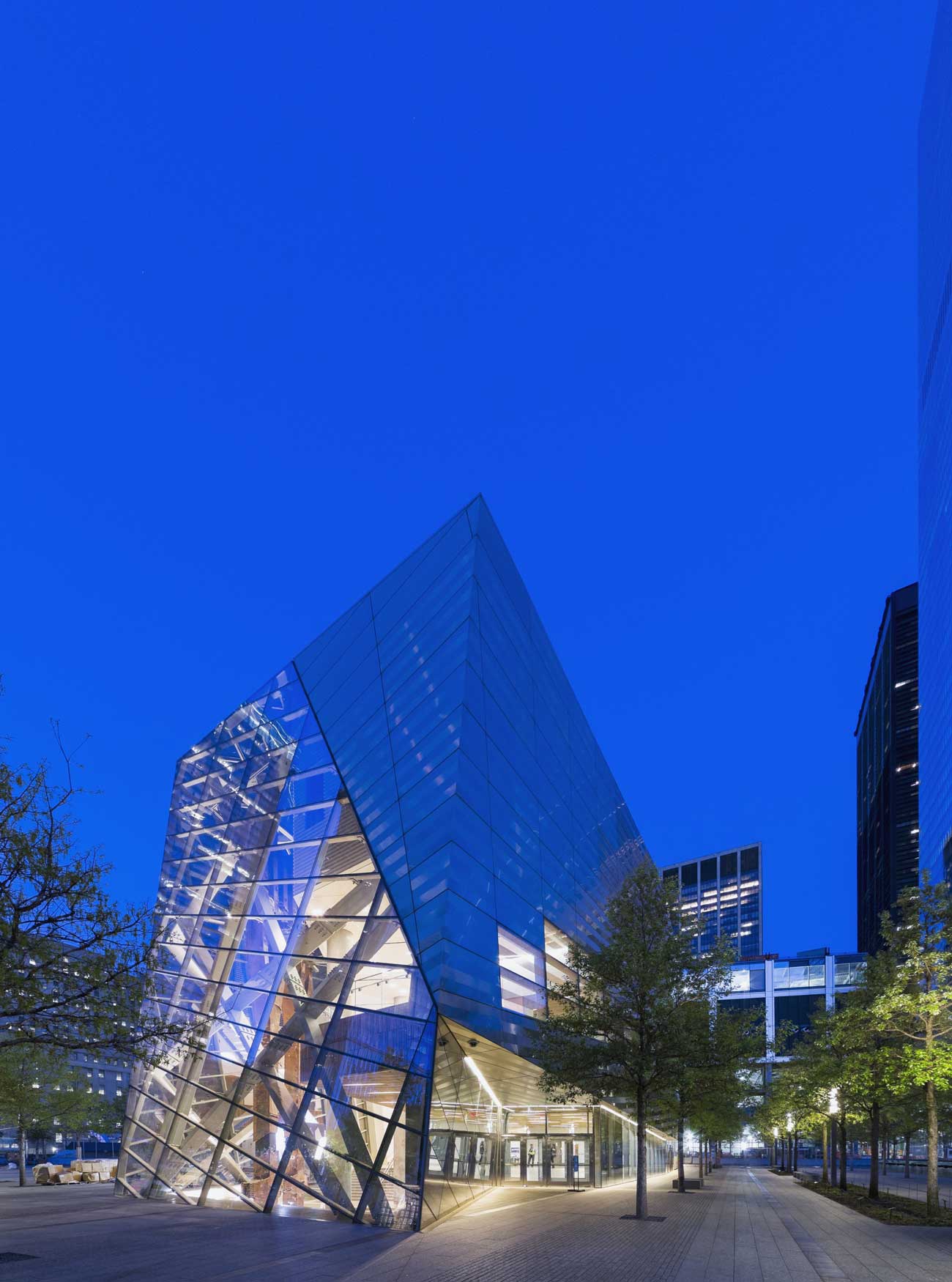
What is the history of Snøhetta Architecture?
Snøhetta AS was established in 1989 in Oslo, Norway. The firm was founded by a group of architects and landscape architects who shared a common vision of creating innovative and sustainable designs. “Snøhetta” refers to a mountain in Norway, symbolizing the firm’s connection to its Norwegian roots. In its early years, Snøhetta focused on smaller-scale projects, including exhibitions and installations; however, the firm soon gained recognition for its unique design approach and began attracting larger commissions. One of its breakthrough projects was the competition-winning design for the Oslo Opera House, completed in 2008. The project put Snøhetta Architecture on the international map and established its reputation as a leading architectural firm.
Over the years, Snøhetta Architecture has expanded its reach beyond Norway and taken on global projects. The firm has completed notable projects in various countries, including the United States, France, Saudi Arabia, and China. Its portfolio encompasses many building typologies, from cultural and educational institutions to public spaces and urban planning. Snøhetta Architecture has received numerous awards and accolades for its work. The firm’s designs are known for their integration with the natural environment, emphasis on sustainability, and a strong focus on user experience. Snøhetta Architecture continues to push the boundaries of architecture, exploring new materials, technologies, and design concepts to create spaces that inspire and enrich people’s lives.
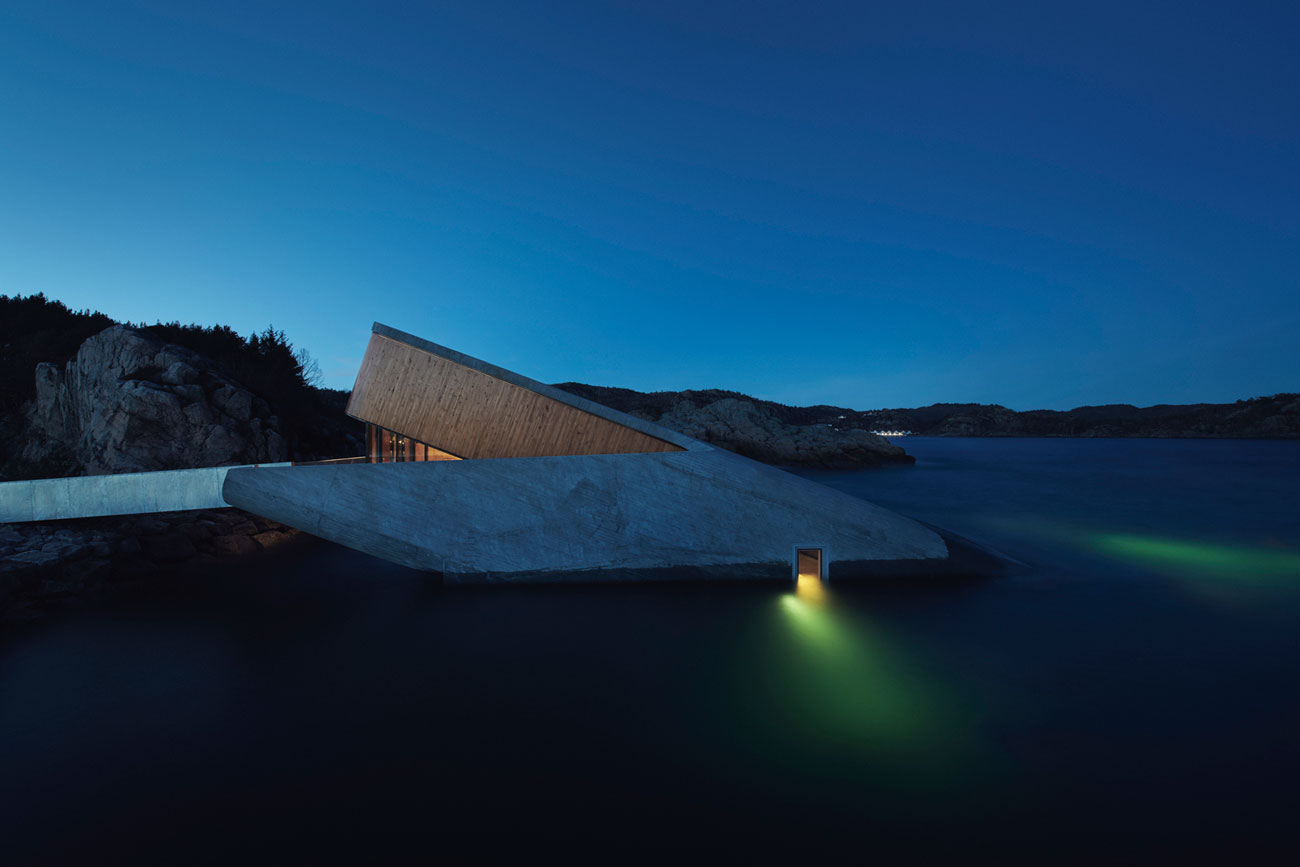
Snøhetta Architecture remains a prominent force in the architectural world, with offices in Oslo, New York City, Innsbruck, San Francisco, and Adelaide. The firm continues to take on diverse projects, collaborating with clients and stakeholders to create designs that respond to the unique characteristics of each site and contribute positively to the built environment.
Where is Snøhetta Architecture located?
Snøhetta Architecture has several offices located in different cities around the world. The firm’s main office is in Oslo, Norway, where it was originally founded in 1989. The location serves as the headquarters for Snøhetta Architecture and showcases its strong connection to its Norwegian roots. The firm has established offices in various international cities. These include New York City, where the firm is well known in the United States. It also has offices in Paris, France, Hong Kong, China, Adelaide, Australia, Innsbruck, Austria, and San Francisco, California. The offices help Snøhetta Architecture collaborate closely with clients, consultants, and local stakeholders to deliver projects that respond to each region’s specific cultural, social, and environmental contexts. The distributed presence of the firm allows them to engage with diverse architectural challenges and contribute to the built environment in various parts of the world.
What does Snøhetta Architecture focus on building?
Snøhetta Architecture focuses on building various structures, including cultural and educational buildings, public spaces, urban planning projects, and landscape designs. The firm’s diverse portfolio reflects its commitment to creating architecture that enhances the human experience and engages with its surrounding environment. The key focus of Snøhetta Architecture is sustainability. The firm places great importance on incorporating sustainable design principles into its projects, including using renewable materials, energy-efficient systems, and sustainable construction practices. It aims to minimize the environmental impact of its buildings and create spaces that contribute to a more sustainable future. Snøhetta Architecture also focuses on the integration of architecture with the natural context. The firm seeks to establish a harmonious relationship between its buildings and the surrounding landscapes. The approach involves careful consideration of the site’s topography, climate, and cultural context. It strives to create designs that complement and enhance their natural surroundings, resulting in buildings that feel connected to their environment.
Who is the owner of Snøhetta AS?
Snøhetta AS was founded in 1987 by Kjetil Trædal Thorsen and a group of young architects. They named it Snøhetta after the tallest mountain in the Dovrefjell National Park. Thorsen is based in Oslo, Norway, and Dykers is based in New York, USA. They are both involved in designing and managing the firm’s projects, including architecture, landscape, interior, graphic, and product design.
Who is the CEO of Snøhetta AS?
Snøhetta AS does not have a single CEO but a collective leadership structure. The firm is led by seven partners who share the responsibility and vision of the practice. They are Kjetil Trædal Thorsen, Craig Dykers, Robert Greenwood, Christoph Kapeller, Elaine Molinar, Martin Gran, and Marianne Berg. Kjetil Trædal Thorsen is one of the founding partners of Snøhetta Architecture. He is a Norwegian architect involved in many of the firm’s iconic projects, such as the Oslo Opera House, the Bibliotheca Alexandrina, and the 9/11 Memorial Museum Pavilion. He is also a professor at the University of Innsbruck and a frequent lecturer at various institutions. Craig Dykers is another founding partner of Snøhetta Architecture. He is an American architect who has led the design of projects such as the Norwegian National Opera and Ballet, the Times Square Reconstruction, and the San Francisco Museum of Modern Art Expansion. He is also a professor at the University of Texas at Austin and a member of the RIBA International Fellowship.
Robert Greenwood is a partner and managing director of Snøhetta Architecture. He is a British architect responsible for projects such as the King Abdulaziz Center for World Culture, the Busan Opera House, and the James B. Hunt Jr. Library. He is also a visiting critic at Cornell University and a fellow of the American Institute of Architects. Christoph Kapeller is a partner and design director of Snøhetta Architecture. He is an Austrian architect who has contributed to projects such as the Lillehammer Art Museum, the Ras Al Khaimah Gateway, and the Calgary Central Library. He is also a lecturer at the University of Southern California and a recipient of the Austrian State Prize for Architecture.
Elaine Molinar is a partner and managing director of Snøhetta Architecture. She is an American architect who has overseen projects such as the Isabel Bader Centre for the Performing Arts, the Ryerson University Student Learning Centre, and the Far Rockaway Public Library. She is also a board member of the Van Alen Institute and a co-founder of the Architecture and Design Network. Martin Gran is a partner and managing director of Snøhetta Architecture. He is a Norwegian architect who has led the design of projects such as the Tverrfjellhytta Norwegian Wild Reindeer Pavilion, the Muttrah Fish Market, and the Underwater Restaurant. He is also a guest professor at the Oslo School of Architecture and Design and a jury member of the Holcim Awards. Marianne Berg is a partner and managing director of Snøhetta Architecture. She is a Norwegian architect involved in projects such as the MAX IV Laboratory Landscape, the Svartisen Glacier Hotel, and the Le Monde Headquarters. She is also a board member of the Oslo Architecture Triennale and a co-curator of the Nordic Pavilion at the Venice Biennale.
What is the mission of Snøhetta Architecture?
The mission of Snøhetta Architecture is to create places that connect people and the world around them. The firm is a transdisciplinary practice integrating architecture, landscape, interior, art, product, graphic and digital design. It believes in dialogue and diversity as the driving forces of its work. The firm has completed projects in over 30 countries, including the Norwegian National Opera and Ballet, the Bibliotheca Alexandrina, the 9/11 Memorial Museum Pavilion, and the San Francisco Museum of Modern Art Expansion. Snøhetta’s vision is to create socially and environmentally sustainable architecture that enhances the sense of place, identity, and relationship with others and inspires curiosity and creativity. It aims to challenge the conventional boundaries of design and explore new ways of thinking and making. Its motto is “Making sense through design.”
What are the most famous projects of Snøhetta Architecture?
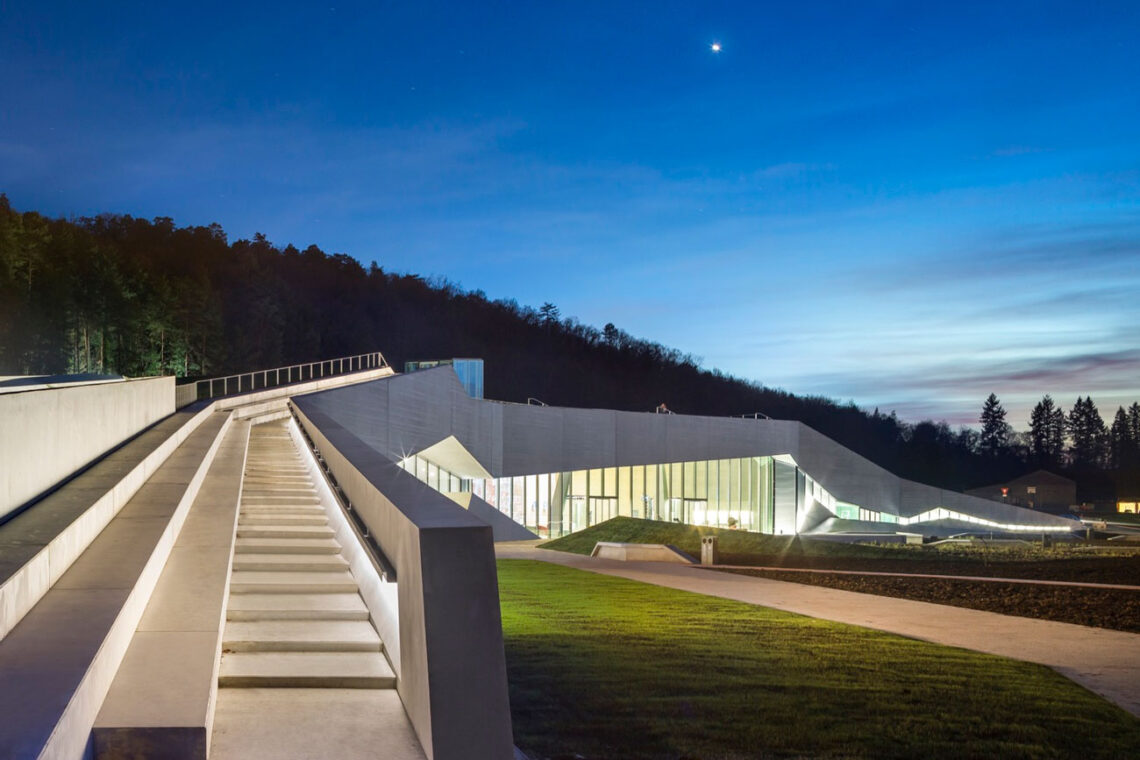
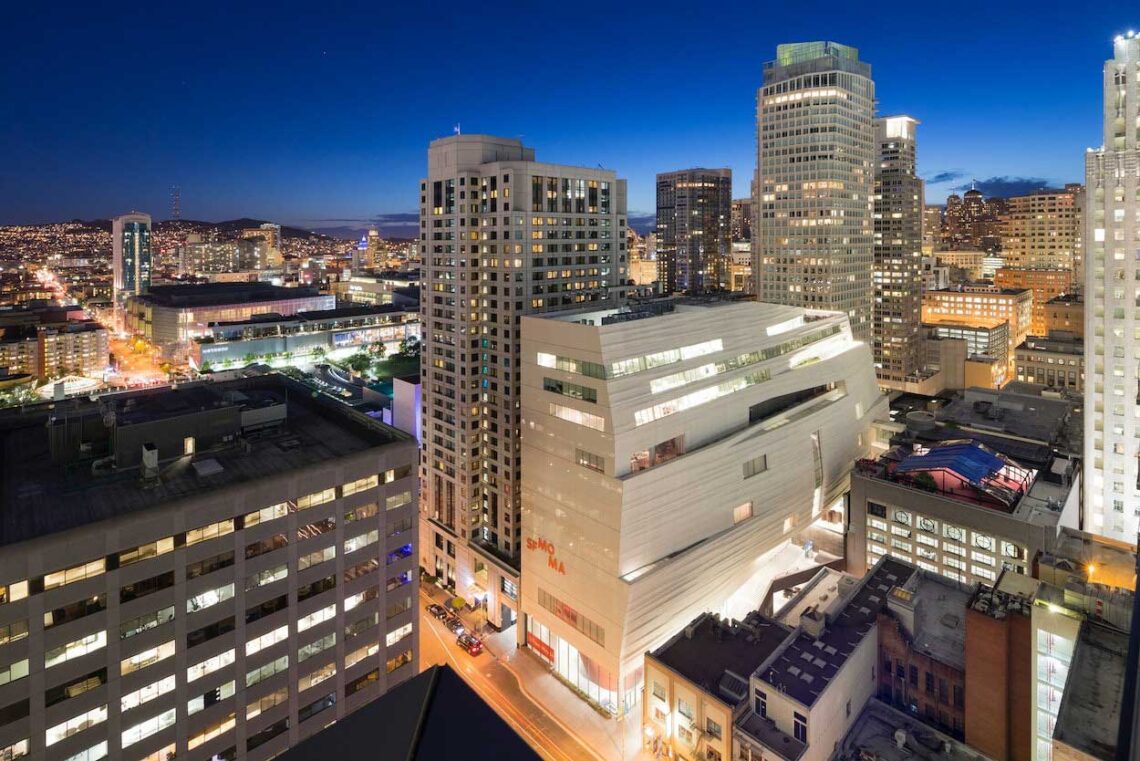
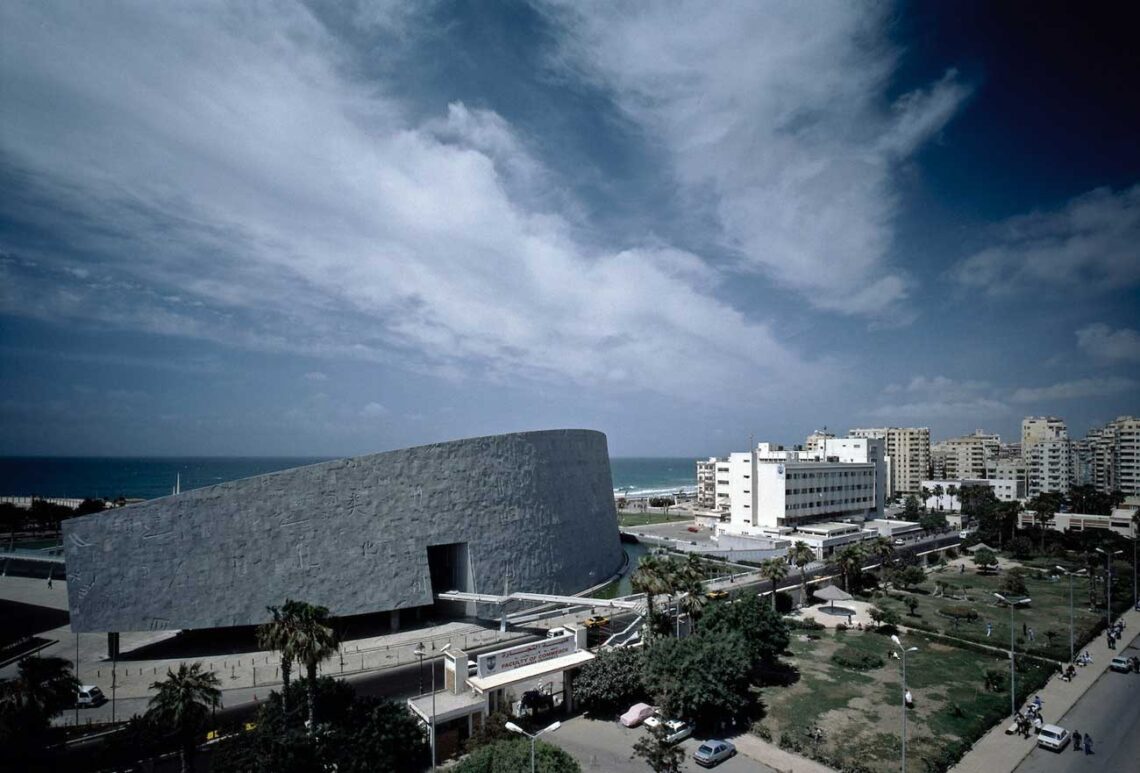
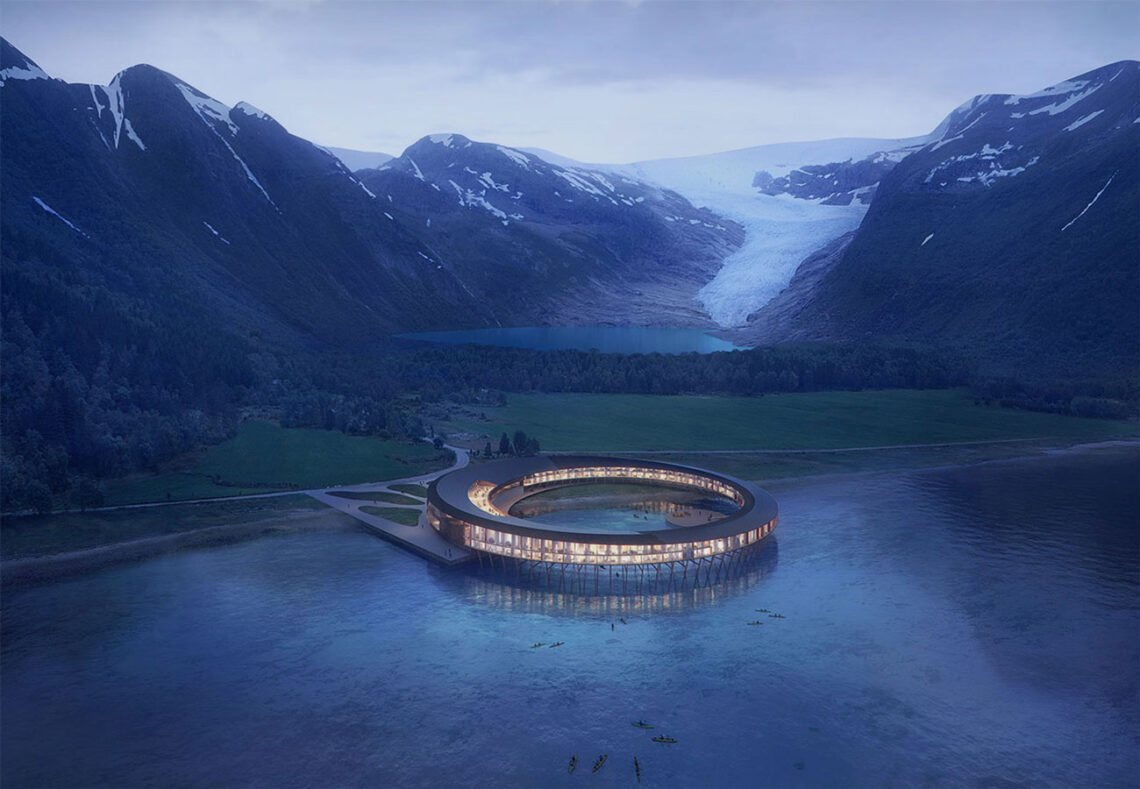
Listed below are the most famous projects created by Snøhetta Architecture:
- Oslo Opera House: The Oslo Opera House is a striking building that resembles a glacier rising from the water by Snøhetta Architecture. It is the home of the Norwegian National Opera and Ballet, and it welcomes visitors to walk on its sloping roof and enjoy the views of the city and the fjord. The opera house won the prestigious Mies van der Rohe Award in 2009 for its innovative design and cultural impact.
- National September 11 Memorial Pavilion: The National September 11 Memorial Pavilion is a geometric structure by Snøhetta Architecture that serves as the entrance to the National September 11 Memorial Museum in New York. It is made of glass and mirrored metal, reflecting the surrounding skyscrapers and the memorial pools. The pavilion houses a large atrium, a visitor center, an auditorium, and two steel tridents recovered from the original World Trade Center.
- San Francisco Museum of Modern Art Expansion: The San Francisco Museum of Modern Art Expansion is a rippling addition to the existing museum that nearly triples its exhibition space. It is clad with white fiberglass panels that create a dynamic facade that contrasts with the brick and stone of the original building. The expansion was designed by Snøhetta Architecture, featuring a new entrance, a sculpture terrace, a living wall, and a bridge that connects to the neighboring Transbay Transit Center.
- Lascaux IV International Centre for Cave Art: Lascaux IV International Centre for Cave Art is a museum that recreates the prehistoric paintings of the Lascaux cave in France. Snøhetta Architecture designed it to blend with the natural landscape and to respect the original site, which is closed to the public to preserve its fragile condition. The museum uses advanced technology and immersive scenography to reproduce the cave environment and the artworks and provide interactive and educational exhibits.
- Svart Hotel: Svart Hotel is a circular hotel by Snøhetta Architecture at the foot of the Svartisen glacier in Norway. It is designed to be the world’s first energy-positive hotel, producing more energy than it consumes. It is also intended to have minimal impact on the environment and wildlife and to offer views of the glacier, the fjord, and the northern lights.
Who are the most important clients of Snøhetta Architecture?
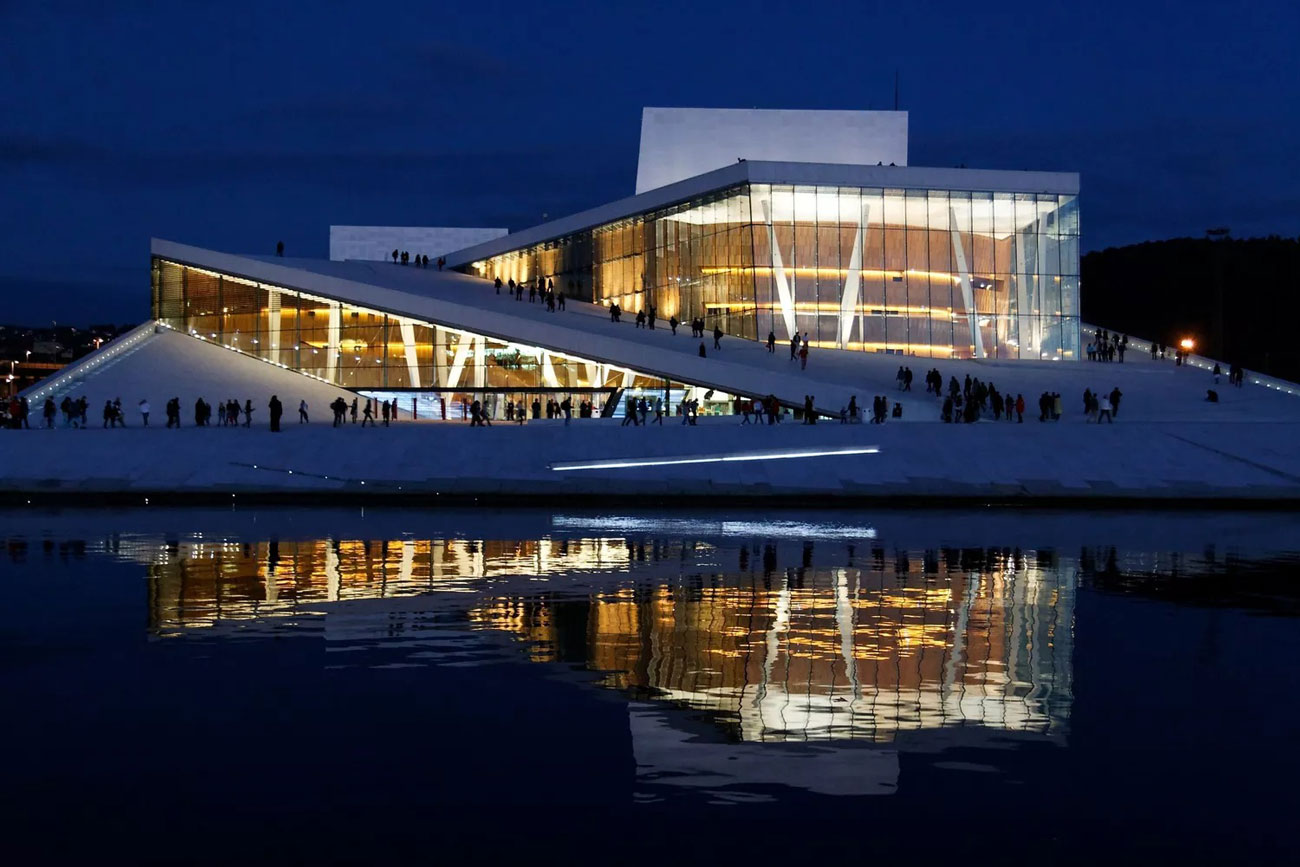
Listed below are the most important clients in cooperation with Snøhetta Architecture:
- Oslo Opera House: The Oslo Opera House is a cultural landmark symbol of Norway’s national identity. Snøhetta designed the building to resemble a glacier emerging from the water, with a sloping roof that visitors can walk on. The opera house won the prestigious Mies van der Rohe Award in 2009 and has been praised for its innovative and sustainable architecture/
- San Francisco Museum of Modern Art: The San Francisco Museum of Modern Art (SFMOMA) is one of the world’s largest museums of modern and contemporary art. Snøhetta was commissioned to design an expansion that would double the museum’s exhibition space and create a new public plaza. The expansion features a striking facade of white fiberglass panels that reflect the changing light and weather of the city.
- Le Monde Group Headquarters: The Le Monde Group is a leading media company in France, publishing newspapers, magazines, and digital platforms. Snøhetta designed a new headquarters for the group in Paris, featuring a transparent and curved glass facade that reveals the activities of the journalists and editors inside. The building also incorporates a public garden and a rooftop terrace that offers city views.
- James B. Hunt Jr. Library: The James B. Hunt Jr. Library is a state-of-the-art library and learning center at North Carolina State University. Snøhetta designed the library to be a hub of innovation and creativity, with flexible spaces, advanced technologies, and a robotic book retrieval system. The library also showcases the university’s commitment to sustainability with a rainwater harvesting system, a green roof, and a high-performance facade.
What is the address of Snøhetta Architecture?
Snøhetta Architecture has multiple office locations across the globe. Snøhetta Architecture’s main headquarters is at Skur 39, Akershusstranda 21, 0150 Oslo, Norway, while some of their main office address are Snøhetta Architecture Hong Kong is at 1/F, Po Hing Court, 10 Po Hing Fong, Sheung Wan, Hong Kong, Snøhetta Architecture Australia is at 178-180 Sturt St, Adelaide SA 5000, Australia, Snøhetta Architecture France is at 19 Rue de Cléry, 75002 Paris, France, Snøhetta Architecture Austria is at Maria-Theresien-Straße 57, 6020 Innsbruck, Austria, and Snøhetta Architecture California 632 Commercial St 4th Floor, San Francisco, CA 94111, United States.
What is Snøhetta Architecture’s contact phone number?
Snøhetta Architecture has multiple office locations across the globe. Snøhetta Architecture’s main headquarters phone number is 24 15 60 60, while some of their main office address are Snøhetta Architecture Hong Kong phone number is 2618 2565, Snøhetta Architecture Austria phone number is 512 359050, and Snøhetta Architecture California phone number is (646) 383-4762.
How do I apply to work for Snøhetta Architecture?
Applicants can follow a step-by-step process to apply for a position at Snøhetta Architecture. Firstly, applicants must check the available job opportunities on their official website or other platforms. They can filter the jobs by location, category, and type. Secondly, applicants must prepare their portfolio and resume according to the requirements of the position they are interested in. They should highlight their relevant skills, experience, and achievements in architecture, design, or landscape. Applicants should also include a cover letter that explains their motivation and interest in working for Snøhetta. Thirdly, applicants need to submit their application online through the ReachMee platform. They must create an account, fill in their personal details, upload documents, and answer some questions. Applicants can also track the status of their applications and communicate with the recruiters through the platform. Lastly, applicants need to wait for the response from Snøhetta. If they are selected for an interview, they will be contacted by phone or email. Applicants can then showcase their work and personality to the hiring team. They will also get feedback and learn more about the company’s culture and values.
What style of architecture does Snøhetta represent?
Snøhetta Architecture represents a contemporary style characterized by clean lines, minimalism, and a focus on functionality. The firm’s designs prioritize simplicity and clarity, often using geometric forms and a restrained color palette. It is known for its ability to seamlessly integrate its buildings with their natural surroundings, creating a harmonious relationship between architecture and landscape. The style of Snøhetta Architecture is influenced by the firm’s Scandinavian origins and deep connection to the natural environment. The firm embraces sustainability principles and seeks to create designs that have a minimal environmental impact. It often incorporates sustainable materials and strategies and thoughtful consideration of energy efficiency and environmental performance.
How important is it for architecture firms to follow the architecture fundamentals?
Architecture firms must follow the architecture fundamentals because they help ensure that the buildings they design are functional, aesthetically pleasing, and culturally appropriate. Architecture fundamentals are the basic principles and guidelines that architects use to create harmonious and balanced structures that meet the needs of their users and the environment. These principles help architects organize their buildings’ spaces, materials, and forms coherently and effectively.
Should all architecture companies have a portfolio?
Yes, all architecture companies should have a portfolio. A portfolio is a key factor in a potential client’s decision to hire an architecture firm, as it visually represents its capabilities and experience. It demonstrates an architecture firm’s skills and creativity and can help establish a reputation and communicate effectively with clients. Without a portfolio, an architecture firm may lose opportunities to showcase its work and attract new projects. It is an essential tool for any architecture firm that wants to succeed in the competitive and dynamic field of architecture.


